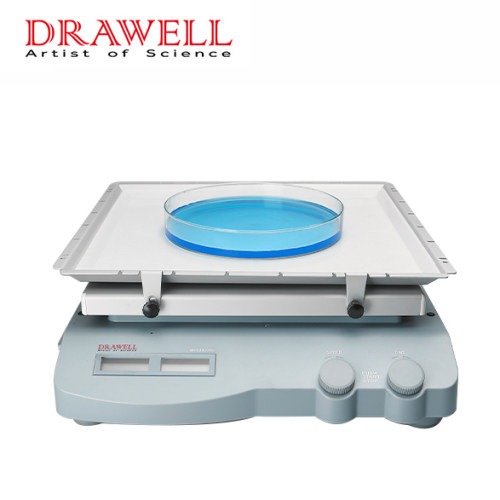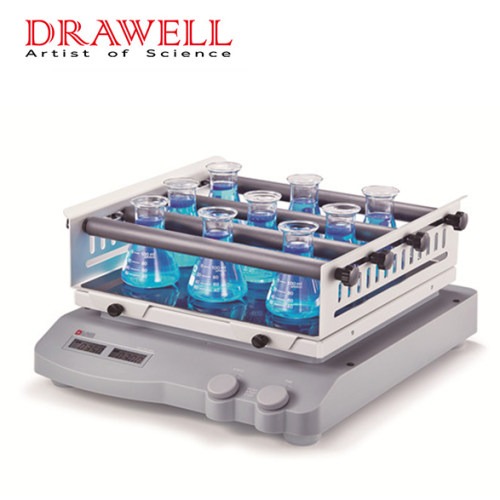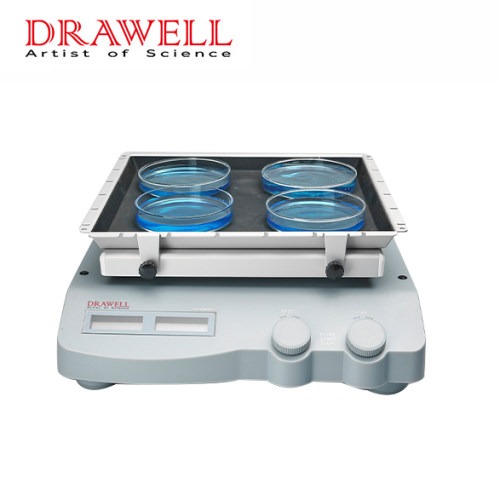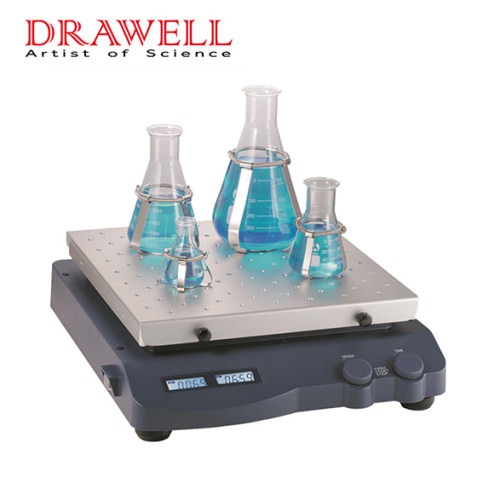Lab shakers are a key component of laboratory shakers. They play an essential role in the modern world of scientific research, offering an efficient and consistent mixing system for a variety of tests. For life sciences, chemistry or clinical labs proper shaker can greatly impact the precision and reliability of the results. With the variety of shakers for labs available and a variety of options to choose from, choosing the right one can be difficult. This article will explore the different shaker types, their work principles, functions and the best way to select the right one for your research requirements.

Key Factors to Consider When Choosing a Laboratory Shaker
Before you get into the details of various shaker models It is crucial to establish the foundation by gaining an understanding of the main factors that will affect your decision-making process. These aspects are directly connected to the scope of your research, the types of samples that you’re working on, and the end goal of the shaker’s agitation procedure. Inattention to these factors can cause suboptimal performance, and possibly even compromised results. Therefore, an informed assessment of your requirements for experiments is the initial and most crucial step to choose the correct shaker for your laboratory.
Some crucial parameters require attention:
- The nature of the Samples: The physical characteristics of your samples such as viscosity size, as well as fragility will greatly influence the type of shaking required. For instance, fragile cells require smooth, even motion and viscous solutions may require more robust shaking. Small amounts of samples could be effectively mixed using an vortex mixer, but large quantities require an appropriate shaker that has the capacity.
- The Type of Application: The particular application defines the necessary movement and the intensity. Cell culture is often benefited by an orbital shake to ensure consistent Aeration and distribution of nutrients. Blotting processes typically employ linear shaking for efficient washing. Hybridization could require moving in a nutating or rocking manner to ensure that the liquid is covered evenly. Understanding the essential requirements of your project is essential.
- Container Size and Type: The dimensions and type of vessel that you’ll be using (e.g. microplates or flasks, tubes Petri dish) are the determinants of needed platform’s size as well as the compatibility of the holding mechanisms. Certain shakers come with universal platforms that have adjustable clamps, whereas others are specifically designed for specific containers.
- Speed and Intensity Requirements: Different applications require different levels of shaking. Certain processes require slow and gentle mixing, whereas others require vigorous, high-speed shaking. The speed range and the ability to adjust of the shaker are crucial elements.
- Temperature Control: Many applications in the chemical and biological fields need shaking to a certain temperature. Incubating shakers, that combine agitation and the ability to control temperature, is crucial to conduct these tests. Be aware of the temperature range as well as stability that these units offer.
- Throughput Requirements: The amount of samples you must process at the same time will determine the platform’s capacity and possibly the need for several shakers, or even larger, higher capacity units.
- Cost and Space Constraints: In the end practical considerations like the budget available as well as lab space will play an important part in the final decision. While performance is the most important consideration but these considerations can affect the variety of choices that are available.
If you take the time to evaluate these crucial elements in the context of the specific requirements of your research it will help you narrow the choices and make an informed choice when evaluating the various kinds of shakers for laboratory use.
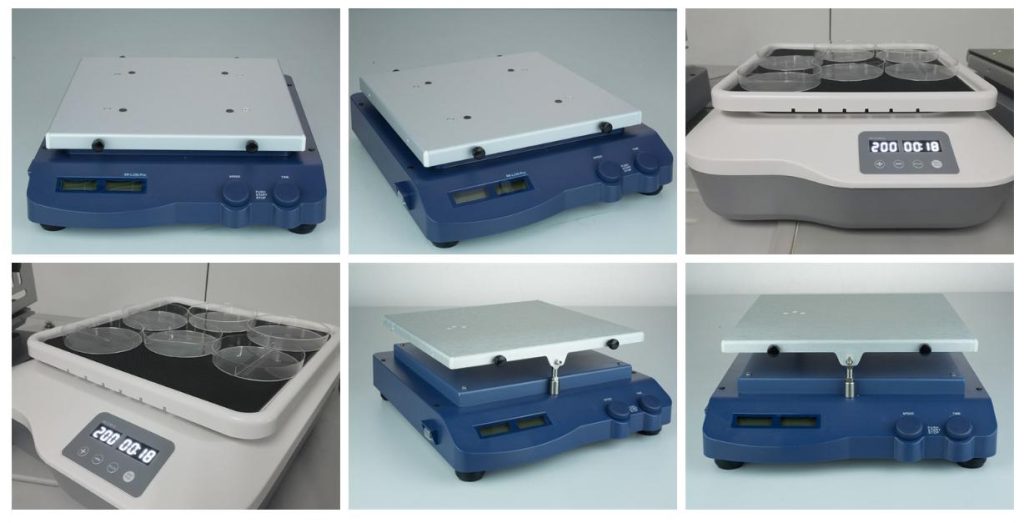
Types of Laboratory Shakers
The world of laboratory shakers has various models, each designed to provide a particular kind of motion that can be used for different applications. Understanding the basic principles of the key features and main functions of these various models are essential to making the right decision. Let’s look at the most commonly used types of shakers in the lab:
| Shaker Type | Working Principle | Key Features | Main Applications |
| Linear Shaker | Forward and backward motions that are horizontal along a straight line, with an adjustable duration of stroke and speeds. | A variable stroke length and speed Platform flat with various clamping mechanisms. Some models have adjustable angle for the platform. | Procedures for blotting (Western, Southern, Northern) as well as DNA extraction protocols; Specific methods of hybridization; Suspension of larger particles. |
| Orbital Shaker | Circular motion that has a fixed orbit radius that creates an action of swirling. | Smooth and constant circular motion Variable speed control; wide variety of platforms sizes as well as holding choices; incubator models are available. | Cell culture; general Mixing of Solutions; dissolving powders; Staining and removing gels. |
| Rocking Shaker | The tilting of the platform about a central axis creating a wave-like movement. | Adjustable speed and tilt angle Platform sizes can be adjusted that can accommodate different vessels. | Hybridization techniques; washing delicate samples; mixing blood samples; general mixing of low-viscosity fluids. |
| 3D Shaker | The combination of an orbital movement with the tilting motion, resulting in a 3-dimensional movement. | Adjustable tilt and speed Adjustable tilt and speed; Non-slip mats, or adjustable platforms for a variety of vessels; Improved mixing effectiveness. | The cell culture (suspension) and Extraction techniques Staining and destaining Immunocytochemistry. |
Every laboratory shaker is engineered to create distinct motion patterns that are specifically tailored to the needs of specific experiments.
- Linear shakers excel in situations that require regular washing and chemical exchange on flat surfaces by their back-and forth motion.
- Orbital shakers and the smooth, circular movement are essential for cell culture as well as general mixing which ensures homogenous suspension and air circulation.
- Rocking shakers give a gentle wave-like agitation that is ideal for fragile samples and hybridization techniques.
- Additionally, 3D shakers give more intricate 3-dimensional motion that improves mixing performance in applications such as suspension cell culture as well as extraction techniques.
Understanding the distinct working principles and essential features of every shaker type enables researchers to choose the appropriate instrument to improve their results.
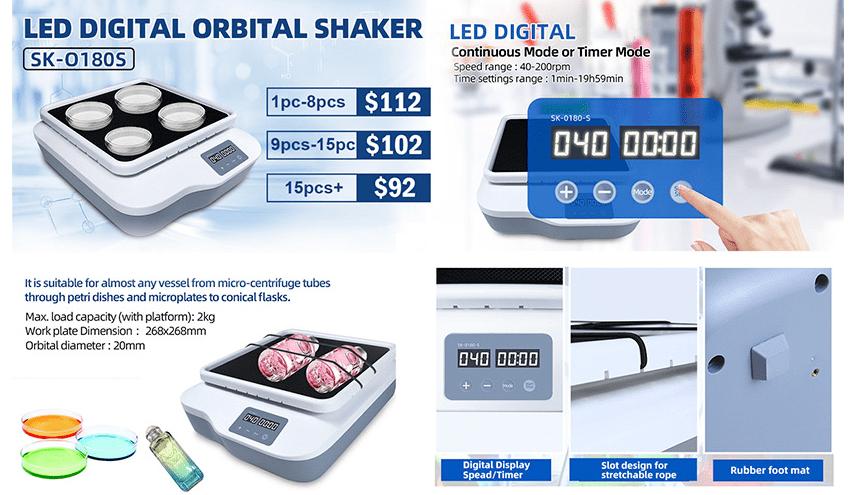
Choose the Right Laboratory Shaker for Your Research
Picking the right shaker for your laboratory relies on a thorough understanding of your research needs as well as the features of each type of shaker. The table below provides an overall guideline for the best shaker types based upon the most common lab applications. Remember that some protocols for experiments might have particular needs that require the use of a more specific decision.
| Laboratory Application | Preferred Shaker Type(s) | Key Reasons |
| Cell Culture (Suspension) | Orbital Shaker, 3D Shaker | Continuous aeration and distribution of nutrients 3D motion helps mix and suspension. |
| Cell Culture (Adherent) | Orbital Shaker (gentle) | A gentle exchange of nutrients and media without separating cells. |
| Blotting (Washing, Incubation) | Linear Shaker | Effective and uniform exchange of reagents across the membrane’s surface. |
| Hybridization Procedures | Rocking Shaker, 3D Shaker | A gentle, uniform distribution of hybridization technologies over membranes. 3D motion allows for greater contact. |
| General Mixing of Solutions | Orbital Shaker | Flexible for a variety of viscosities and volumes. |
| Dissolving Powders | Orbital Shaker, Vortex Mixer (small) | It is effective in forming homogenous solutions and Vortex mixers for fast dissolution of tiny quantities. |
| Staining and Destaining Gels | Orbital Shaker, Linear Shaker | A uniform and even distribution of staining and destaining products. |
| Extraction Procedures | Linear Shaker, 3D Shaker | Facilitates efficient interaction between the analytes and the solvents 3D motion is a great way to increase the extraction rate. |
| Mixing Blood Samples | Rocking Shaker | Gentle mixing to stop bleeding but not causing hemolysis. |
| Rapid Mixing of Small Volumes | Vortex Mixer | Highly efficient and fast with individual tube. |
| Long-term Incubation and Agitation | Incubating Orbital Shaker | Maintains a constant temperature and offers moderate to light mixing. |
The choice of the right laboratory shaker is an important choice that will significantly affect the effectiveness and quality in your study. When you understand the fundamentals as well as the most important features and the main functions of various kinds of shakers in the laboratory researchers can make informed decisions that are in line with their own specific requirements for experiments. Be sure to consider factors like the characteristics of the sample, its application requirements as well as the type of container and the desired intensity of agitation will help you choose the ideal shaker that is best suited to your laboratory. While the table above provides general guidelines, you should always refer to your protocol for experimentation and take into consideration the specifics of your study. If you’re searching for an expert in the field of shakers We’re happy to meet your requirements.
Related Products Recommendation
What Next?
For more information, or to arrange an equipment demonstration, please visit our dedicated Product Homepage or contact one of our Product Managers.


